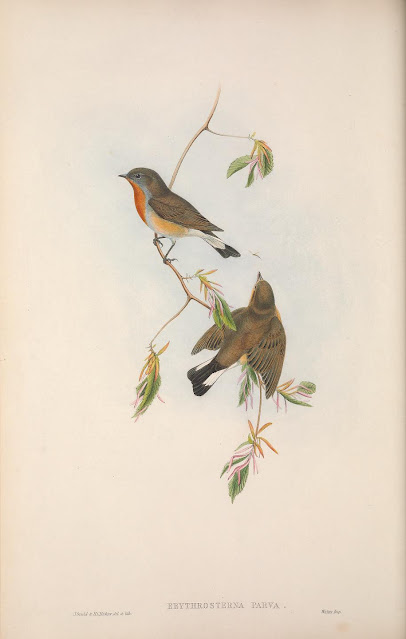 |
| Plenty of birding habitat in and around Liberia's capital city, Monrovia. What could possibly go wrong? |
WANTED! A data administrator (with a thirst for adventure) to work for the RSPB in an exotic destination in Africa.
Applications for this latest posting in sunny climes overseas - namely Liberia - close this Friday October 4.
It is a two-year position which involves managing a database to support the charity and other groups with their finances, land use planning and habitat restoration activities.
It is all part of a project which seeks to safeguard for nature 460,000 hectares of Upper Guinea forest and agricultural land.
What the job description does not state is that Liberia is a troubled country where the crime rate is high.
The Foreign, Commonwealth and Development Office notes: "Liberians are the main victims of crime, but foreign nationals can be targeted.
"Most crime is opportunistic theft, but there are organised criminal gangs.
"Thieves are often armed with knives or machetes, and they occasionally carry firearms.
"Foreign nationals have been mugged in the Mamba Point and Sinkor areas of Monrovia, where most international visitors stay.
"Criminals also operate in nightclubs and on beaches during the day, and foreigners have reported assault and robbery happening in taxis.
"Credit and debit cards are not generally accepted in Liberia, except for a few of the major hotels and some larger supermarkets.
"They may be unable to process card payments when internet connections are poor.
"Not many places accept travellers cheques.
"Foreign exchange and banking facilities are limited. Western Union and MoneyGram can transfer money from the UK, although there are very few offices outside Monrovia.
"Liberia’s banks are currently experiencing cash shortages of both US dollars and Liberian dollars. Banks and foreign exchange facilities may not be able to pay out transferred funds or fulfil ATM withdrawals.
"Bring sufficient funds, in US dollars, to cover all expenses."
The advice continues: "The roads from Monrovia to the port town of Buchanan and to the border with Sierra Leone at Bo Waterside, and to the border with Guinea at Ganta, are mainly paved and in reasonable condition.
"Most other roads outside Monrovia are unpaved. Roads outside Monrovia can be treacherous and most are unlit.
"The road from Monrovia to Roberts International Airport is currently undergoing roadworks and can be hazardous.
"Driving and road conditions deteriorate significantly during the rainy season from May to November, and many roads become impassable.
"The standard of driving is generally poor, and many vehicles do not have lights. Drivers often swerve to avoid potholes and taxis can slow or stop unpredictably to pick up or drop off passengers. Motorcycle taxis (‘pein-peins’) are particularly dangerous.
"If you’re involved in a traffic accident, be aware that local crowds can become hostile and may attempt to attack you.
"Drug trafficking and diamond smuggling are illegal. If convicted you will get a long prison sentence. Local prison conditions are harsh.
"Liberia has a high rate of rape and sexual assault. There have been cases of rapes and attempted rapes of foreign women although these are rare.
"Beaches in Liberia can have rip tides and other dangerous currents. Get local advice before going in the water.
"Avoid canoes and fishing boats offering passenger services. They are regularly overwhelmed by strong waves and currents.
"Most foreign nationals travelling by road outside Monrovia will hire a car with a driver, and travel in convoy of at least two vehicles in case of breakdowns or possible attacks. "
What about the risk of terrorism?
"Although there is no recent history of terrorism in Liberia, attacks cannot be ruled out.
"Terrorist groups in West Africa continue to mount attacks in the region.
"Attacks could be indiscriminate, including in places frequented by foreign nationals, such as beach resorts, hotels, cafés and restaurants."
The salary on offer for the RSPB vacancy is £26,379.00 - £28,328.00 per annum.
Still interested? More details from Helen.Tellis@rspb.org.uk
* Photo of the skyline of Liberia's capital city, Monrovia, by Panoramio via Wikimedia Commons




























